Back in January, we told you about The Printed Blog, a venture by serial entrepeneur Josh Karp that sought to flip the online publishing model by delivering blogs in print. The idea was to take the best entries by local bloggers and rush them into print for consumption by busy commuters, whom advertisers would want to reach. “If his idea reaches its full potential, he’ll have hyper-local twice-daily editions in thousands of communities around the US,” we wrote. “Chicago alone could support 50 localized Printed Blogs.”
Well, it turns out Chicago could barely support even one Printed Blog for more than a few issues. Josh Karp shut his doors last week, having poured more than $100,000 of his own money into a venture that barely got off the ground. The Printed Blog published 16 issues in seven regions and it was a pretty interesting read. Its slogan – “Like the Internet, only flammable” – betrayed its playful nature and the website is the essence of Web 2.0 shareability. The venture was a victim of a harsh economy, in part, but also the reality that people apparently don’t want to read 13-hour-old blog entries about the White Sox in print, as the Christian Science Monitor account points out. It was a long shot that drew skepticism from the start, but it generated huge publicity for Karp, who we hope will quickly find a more successful outlet for his ample creativity.
Karp posted several closing entries on his blog, including this one about the lessons he learned from the venture. Among the half-dozen he lists are this one: “Instead of focusing on one thing – revenue – on a small enough scale to prove our model, I decided to try and publish the paper in Chicago, San Francisco, New York, and Los Angeles… I got carried away, and we spread ourselves too thin too fast.” We’re going to be seeing a lot of entrepreneurs try to fill the void left by dying newspapers in the coming years and they would do well to read Karp’s advice. Or even bring him on as a publisher.
The Flap Over Free
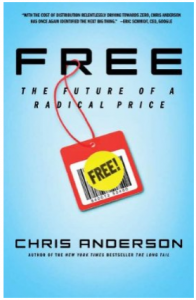 We don’t know if you’ve followed Wired editor Chris Anderson’s latest book, Free: The Future of a Radical Price, but the premise is worthy of attention from publishers. Anderson’s premise is that the Internet has created a new competitive dynamic that is relentlessly forcing the price of all things digital – and some things physical – toward zero.
We don’t know if you’ve followed Wired editor Chris Anderson’s latest book, Free: The Future of a Radical Price, but the premise is worthy of attention from publishers. Anderson’s premise is that the Internet has created a new competitive dynamic that is relentlessly forcing the price of all things digital – and some things physical – toward zero.
Software that once commanded six-figure license fees is now free. The entertainment industry has all but abandoned efforts to copy-protect music. Artists now give away music and make money on concerts.
Anderson further argues that other businesses may be pulled into the low-cost business model orbit. T-shirts are basically free, but the cost of a Major League Baseball logo is $30. Casinos give away flights and hotel rooms and make it back on gambling. Ryan Air has staged promotions in which its flights are given away for free while revenue is derived from value-added services like luxury meals or gambling.
This has big implications not just for publishers but for anyone whose value is predicated upon delivering content. Anderson’s premise is controversial and scary to many people. Others simply don’t buy it, including Malcolm Gladwell, who penned a well-argued review in The New Yorker last week. Gladwell points out that Anderson’s argument ignores the value – and cost- of the distribution network. He notes that YouTube makes most of its money from advertising sold against professional programming that it buys from entertainment companies. Thus, the company’s supposedly free content model is really underwritten by real cash money.
Anderson fires back with a respectful rejoinder, telling the story of GeekDad, a blog he started a few years ago that is now run by a largely volunteer workforce. These writers do a heckuva job delivering a product that would have formerly required an expensive publishing infrastructure, and they do it for personal fulfillment, Anderson says. He suggests that this is where the news model is going: “I can imagine far more subjects that are better handled by well-coordinated amateurs than those that can support professional journalists. My business card says ‘Editor in Chief’, but if one of my children follows in my footsteps, I suspect their business card will say ‘Community Manager.’ Both can be good careers.”
True to form, Anderson is giving away digital copies of Free (you can read the whole thing here) but charging for the book. Publicity will no doubt help sustain his five-digit speaking fee. That’s further support for the book’s premise. It isn’t helping his magazine, though, which is among the worst-performing print magazines of 2009. Free can apparently only get you so far.
Miscellany
The Cincinnati Enquirer appears to be shouldering more than its share in the latest round of Gannett Co. layoffs. The paper has laid off 101 people out of a total staff estimated at between 800 and 920. It has also laid off the entire staff of CinWeekly, companion publication aimed at young readers. Meanwhile, the Detroit Free Press is escaping the axe entirely, but that’s because it and its JOA partner the Detroit News have already cut 17% of their combined workforces since December.
More than half of business communicators surveyed by Ragan Communications think Twitter is a fad that will crest and decline as people run out of interesting things to say. The 28% of respondents who have a microblogging policy in place credit it with improving employee engagement, helping customer service, building reputation and boosting website traffic. Another 40% have no microblogging plan in place. EMarketer remarks on Twitter mania, noting that when people start attributing world-changing characteristics to a new technology, it’s time to start worrying.
The New York Times Co. has extended until late this month the deadine for bids on the Boston Globe. The move is intended to give prospective bidders (three at the moment) time to see if advertising revenue has leveled off and whether the Newspaper Guild approves a tentative contract containing $20 million in concessions. Meanwhile, a lively discussion is going on within the Guild ranks over whether to approve the proposed deal.
A federal judge has cleared the way for Journal Register Co. to emerge from bankruptcy with 90% of the company in the hands of its debtors. The company’s reorganization plan had been held up pending resolution of a dispute over a $1.3 million “shutdown” bonus, which will pay some senior managers to lay off staff and shut down publications. Opponents argued that the bonuses are excessive and unwarranted, but Judge Allan L. Gropper ruled that the fact that the fact that the plan was approved by secured lenders and the company’s creditors committee justified its validity. Under the reorganization plan, JRC gives up 90% of the company in exchange for $225 million from lenders.
And Finally…
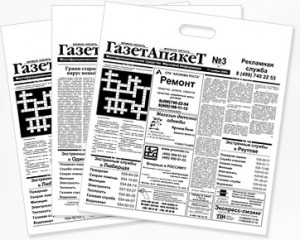 The comedy team of Bob & Ray once had a skit about an idea called edible food packaging. It turns out the notion may not have been so far-fetched, as publishers are trying every possible idea to make their print products palatable. In Moscow, the the GazetaPacket is delivering news, crosswords, recipes and advertising on printed paper bags. It’s been running since last August. Editors Weblog tell of other ideas, like Bill Shein’s suggestions for edible paper, martini-flavored ink and naked women on the cover. That last one’s been tried and apparently doesn’t work, but you know what they say about if at first you don’t succeed…
The comedy team of Bob & Ray once had a skit about an idea called edible food packaging. It turns out the notion may not have been so far-fetched, as publishers are trying every possible idea to make their print products palatable. In Moscow, the the GazetaPacket is delivering news, crosswords, recipes and advertising on printed paper bags. It’s been running since last August. Editors Weblog tell of other ideas, like Bill Shein’s suggestions for edible paper, martini-flavored ink and naked women on the cover. That last one’s been tried and apparently doesn’t work, but you know what they say about if at first you don’t succeed…
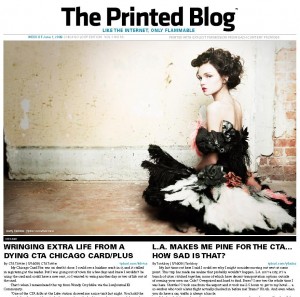
 Another group of Rocky Mountain News ex-pats is
Another group of Rocky Mountain News ex-pats is 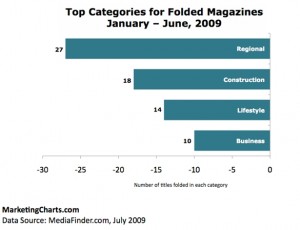
 “Lifting the newspaper/broadcast cross-ownership ban could benefit both newspaper and radio industries; however, rather than serving as an open-ended gift to media conglomerates, repealing the ban should be tied to stricter radio ownership limits. According to an FCC study, newspaper/television station cross-ownership enhances the quantity and quality of TV news and public-affairs programming. Radio could similarly benefit from partnerships between broadcasters and publishers because most newspapers (with a few notable exceptions) are, much like radio, inherently local. Thus, the addition of print reporters to the small news staffs (if they exist at all) of cross-owned radio stations could enhance local-radio news … an area in which local radio is currently underperforming.”
“Lifting the newspaper/broadcast cross-ownership ban could benefit both newspaper and radio industries; however, rather than serving as an open-ended gift to media conglomerates, repealing the ban should be tied to stricter radio ownership limits. According to an FCC study, newspaper/television station cross-ownership enhances the quantity and quality of TV news and public-affairs programming. Radio could similarly benefit from partnerships between broadcasters and publishers because most newspapers (with a few notable exceptions) are, much like radio, inherently local. Thus, the addition of print reporters to the small news staffs (if they exist at all) of cross-owned radio stations could enhance local-radio news … an area in which local radio is currently underperforming.” “Frankly, my students want and expect everything ‘on demand.’ They are not specifically loyal to media brands. They do not care what the source of their media content is as long as it entertains or informs them. If I were running a newspaper’s city room, I’d be sprinting to create more ‘TV News Stories’ that people can watch on their websites. A few newspaper companies are doing this, but the vast majority [of them] simply send one of their print reporters out into the field with a substandard consumer camera to record a news conference. Yes, that’s content, but it isn’t good content and it won’t attract younger readers. They need to mimic the styles that TV reporters do with visualizing stories. Every story in the newspaper should have a companion video version available on demand.”
“Frankly, my students want and expect everything ‘on demand.’ They are not specifically loyal to media brands. They do not care what the source of their media content is as long as it entertains or informs them. If I were running a newspaper’s city room, I’d be sprinting to create more ‘TV News Stories’ that people can watch on their websites. A few newspaper companies are doing this, but the vast majority [of them] simply send one of their print reporters out into the field with a substandard consumer camera to record a news conference. Yes, that’s content, but it isn’t good content and it won’t attract younger readers. They need to mimic the styles that TV reporters do with visualizing stories. Every story in the newspaper should have a companion video version available on demand.”
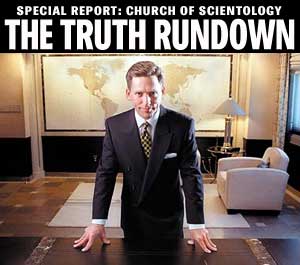


 The Ann Arbor News, which
The Ann Arbor News, which 
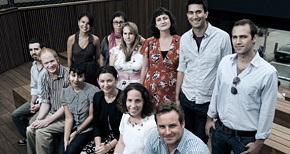
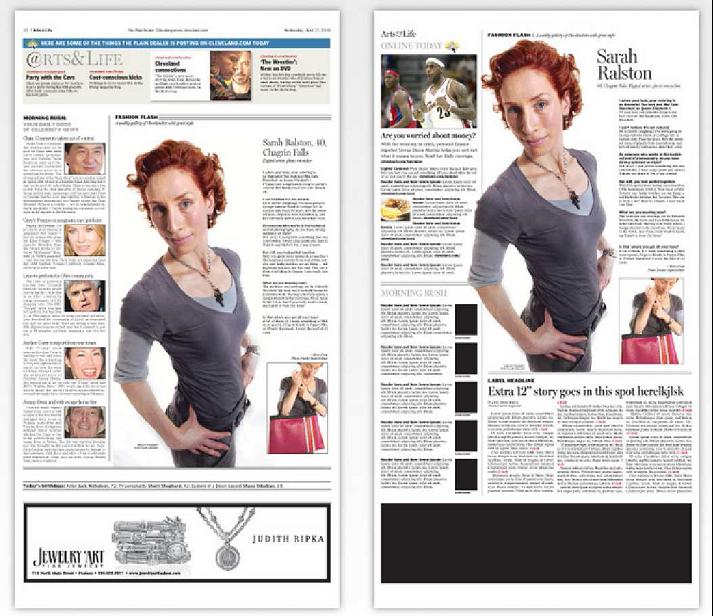
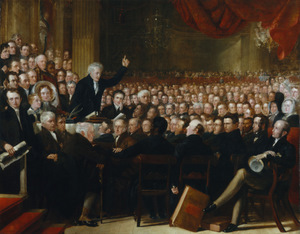 Newspaper executives met in semi-secrecy this week to ponder collaborative solutions to the industry’s troubles.
Newspaper executives met in semi-secrecy this week to ponder collaborative solutions to the industry’s troubles.

